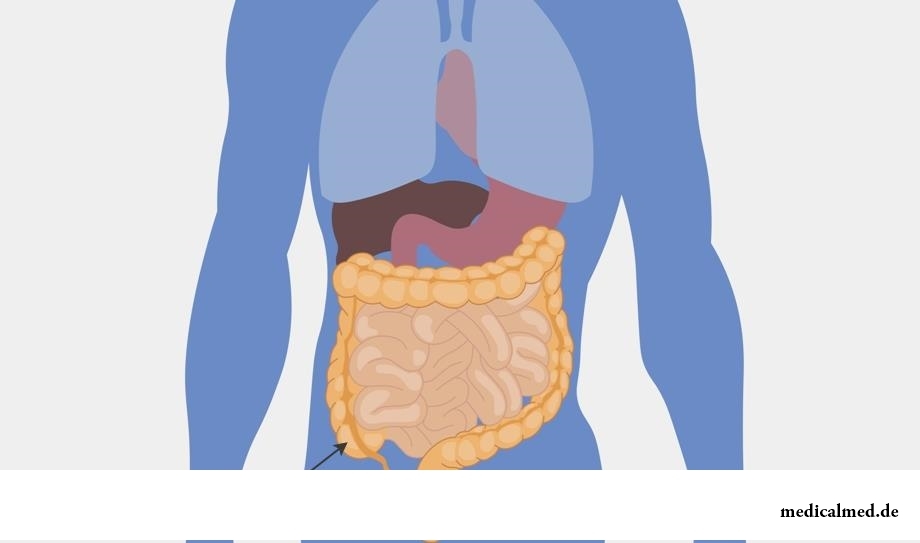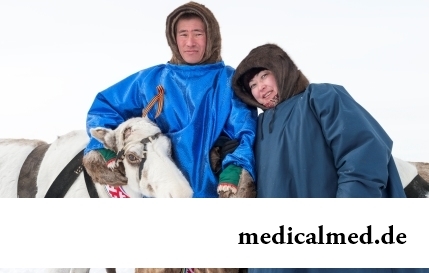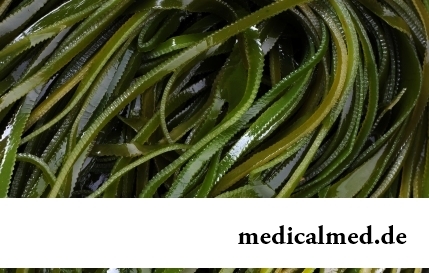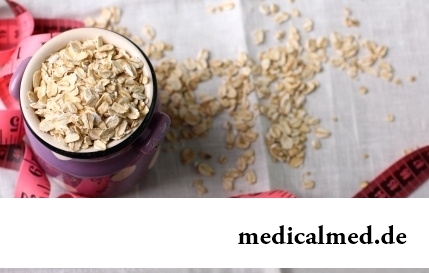





Caecum
The caecum begins right after a small intestine and represents initial department of a large intestine. It is located right after the ileocecal valve interfering the return hit of intestinal contents from a large intestine in thin.

Caecum structure
By the outward the caecum reminds a bag and is located in the field of the right ileal pole. Its front part is covered with the epiploon separating it from an abdominal wall. In a caecum there is a sphincter which is on border between a caecum and a worm-shaped shoot (an appendix, a caecum shoot). It plays a role of the valve and interferes with hit of a chyme (the liquid intestinal contents consisting of partially digested food, gastric and intestinal juices) in a gleam of a worm-shaped shoot and is called Gerlakh's valve.
Caecum shoot
The caecum shoot departs from a back wall of a caecum below the place of its connection with an ileal gut. Its length makes from 3 to 15 cm, and diameter usually does not exceed 5 mm. He usually lies down in the field of the right ileal pole. The appendix connects to a caecum a mesentery. In it the mucous membrane in which there are rather big sites of accumulation of an adenoid tissue covers.
It is considered that the shoot of a caecum is peculiar "incubator" in which microorganisms, necessary for normal function of intestines, develop. Is well-known such fact that after surgical removal of an appendix, intestinal microflora at people after treatment by antibiotics is recovered much longer, than at people at whom the shoot of a caecum is kept. In addition the appendix performs also protective function, being a part of system of mukazalny immunity. Therefore it is called sometimes an intestinal almond.
Caecum diseases
The caecum is the favourite place of localization of rather large number of various diseases that is explained by anatomic and physiological features of this department of intestines.
Caecum inflammation
Inflammatory process in fabrics of a caecum is called a typhlitis. In the symptoms the inflammation of a caecum is similar to appendicitis. Patients show complaints to the pains which are localized in the right ileal area. But if at appendicitis of pain are not connected with meal, then at a typhlitis they arise or amplify several hours later after food. In addition at a caecum inflammation at patients fervescence is noted, there are nausea, vomiting, diarrhea.
At a typhlitis it is necessary to carry out differential diagnosis with gynecologic diseases and appendicitis.
If the doctor establishes that inflammatory process is precisely localized in a caecum – treatment in this case conservative. To the patient usually appoint antibiotics of a broad spectrum of activity, carry out infusional therapy, appoint a bed rest and a sparing diet.
The typhlitis can lead to development of complications – a mesadenitis, a paratyphlitis (an inflammation of the fabrics surrounding a caecum) – treatment of which can demand carrying out surgical intervention.
Caecum cancer
Malignant tumors of a caecum make nearly 40% of all other tumors of intestines. Insidiousness of cancer of a caecum is that the disease at early stages proves nothing. Usually very first sign is emergence in the fecal mass of blood. The constant loss of blood gradually leads to development of the expressed anemia. Emergence of blood in fecal masses can be also observed at hemorrhoids. Therefore patients need additional inspection which allows to establish the exact diagnosis. All persons need to carry out the inspection directed to detection of cancer of a caecum also with the general anemia if the reason of its development is not established.
At later stages of cancer of a caecum patients begin to complain of pains in the right ileal area, on lack of appetite, weight loss. At metastasises mechanical jaundice develops in a liver.
In the presence of a malignant tumor of a caecum – treatment surgical. During operation make removal of an affected area of intestines. In most cases this operation does not demand imposing of a kolostoma (formation of an unnatural anal orifice necessary for removal of gas and fecal masses). Such need can arise only in extreme cases when operation is carried out at late stages of a disease, and it is followed by massive bleeding. During operation delete the lymph nodes and other soft tissues which are also affected by tumoral process.
After operation appoint beam and/or chemotherapy which reduce probability of a recurrence of a disease. If it is not possible to execute radical operation for any reasons (prevalence of process with existence of the remote metastasises, the general serious condition of the patient, extreme degree of exhaustion, etc.), then appoint chemotherapy which purpose is extension of life of the patient and improvement of its quality.
At malignant tumors of a caecum treatment is most effective at early stages of a disease and allows to achieve an absolute recovery in many cases. Therefore it is very important to ask at emergence of the first symptoms of cancer of a caecum for medical care!
In our intestines are born, millions of bacteria live and die. They can be seen only at strong increase, but if they gathered, then would be located in a usual coffee cup.

One of the useful properties presented to the person by the nature is ability to feel fear. This ability is called a signal...
Section: Articles about health
Traveling all over the world, many try to try the most exotic dishes of national cuisines. There is even a so-called gastronomic tourism which, according to gourmets, not only allows to receive new feelings, but also is capable to show life the friend...
Section: Articles about health
You heard that laughter prolongs life? Researchers did not manage to establish longevity direct link with sincere fun yet, but several facts confirming beneficial influence of risibility on the state of health are clinically proved....
Section: Articles about health
The fatigue, sleep debt, disturbances of food, bad mood, vagaries of the weather – all these circumstances badly are reflected in our vn...
Section: Articles about health
For residents of the countries of Southeast Asia various algas are an obligatory component of a daily diet. Their popularity is connected not only with high tastes, but also with numerous curative properties. Russians are a little familiar with...
Section: Articles about health
On the head of the person about one million hair follicles, or as they are called still, hair bulbs are located. At the time of the birth most of them is in the "sleeping" state, but within several weeks follicles become more active, and from them hair begin to grow. Intensity of this process is individual, and during life it can change. Genetic predisposition, a physical and emotional state, aggressive influence affects the growth rate of hair out of...
Section: Articles about health
Diseases of joints often begin imperceptibly for the person. The first stages of destruction of the cartilaginous tissue providing soft and свободн...
Section: Articles about health
The list of stereotypes of which, apparently, all know strongly includes following: British surely eat porridge for breakfast. Perhaps, not all modern residents of Britain arrive quite so, but for those from them which continue to follow this t...
Section: Articles about health
More than a half of the married couples which faced prostatitis – leave. The new broadcast "Female View of Prostatitis" will help to learn – whether you have or your relatives problems....
Section: Articles about health
The phenomenon of improvement of a condition of the patients at administration of drugs who are not containing active agents, so-called effect of placebo is known...
Section: Articles about health
Epilepsy is one of widespread neurologic diseases. Parents, whose children suffer from this illness, should face rumors and delusions, many of which remained since the Middle Ages....
Section: Articles about health
Scientists always aimed to offer fundamental explanations for medical problems. Their theories formed the basis of modern methods of treatment of the hardest pathologies and helped to save a set of lives. However stories are known also such theoretical constructions, following to which brought to mankind of a trouble and torture, ruined destinies and health of many people....
Section: Articles about health
Hemorrhoids – extremely widespread disease. Periodically arising inflammations and bleeding of hemorrhoidal nodes cause serious discomfort to nearly fifteen percent of adults. Meanwhile, having a clear idea of the reasons of an exacerbation of an illness and following rules of precaution, it is possible to reduce substantially sharpness of unpleasant feelings and to reduce progressing of a disease....
Section: Articles about health
Small appetite at the child – the complaint which pediatricians should hear practically from each mother. Most often it is carried to разр...
Section: Articles about health
The technique of acupuncture (acupuncture) is used in the medical purposes more than three and a half millennia. It is eurysynusic and recognized as official medicine in the majority of the developed countries of the world. Influence by fine needles on so-called points...
Section: Articles about health
Osteoporosis this general disease which main sign is decrease in density of a bone tissue. On distribution width it takes the fourth place among noninfectious diseases. The illness develops at mature age more often: in our country about a third of women and a quarter of men suffers from it 50 years are more senior....
Section: Articles about health
Statistically, at the address to doctors seven of each ten patients complain of a headache. Actually people, periodically...
Section: Articles about health
Coffee – favourite drink of many. For the last decades it more than once already declared very harmful, extremely useful and even necessary for normal life activity. In spite of the fact that this product became for us usual for a long time, exists much...
Section: Articles about health
Among a set of the perfumery and cosmetic goods which are released today the special group is made by the means containing antibacterial components. Such types of gels, shampoos, soaps, creams, lotions and other products are positioned by manufacturers as a panacea from all diseases caused by pathogenic microorganisms. The unlimited and uncontrolled use of similar means becomes result of trustfulness of the buyers hypnotized by persuasive advertizing sometimes. Many spetsial...
Section: Articles about health
There is an opinion that at low temperatures safety of products is ensured longer and better thanks to what the refrigerator considers...
Section: Articles about health
The number of long-livers is very small. One person from 5 thousand lives up to age of 90 years, and the centenary boundary steps over only one of 20 thousand. However, doctors claim that each of us is quite able to affect own destiny. At the same time speech to Ida...
Section: Articles about health
Reactive pancreatitis - the disease which is characterized by inflammatory process in a pancreas which arises most often because of excess activity of digestive enzymes. It − the emergency state which treatment has to take place in surgical department under control of doctors. The acute inflammation of gland can become the reason of its transition to a chronic form, and also development is purulent - necrotic pancreatitis which the extensive necrosis of fabrics can follow. Zabolev...
Section: Articles about health
Let's begin with the fact that a separate illness which is called "adjournment of salts", just does not exist. In practice this household name of plank beds...
Section: Articles about health
Eyes – unique body on the structure thanks to which the person obtains about 80% of information on the world around: about a form, color, size, the movement, and also many other parameters of objects or phenomena. But whether much we know about the most valuable body...
Section: Articles about health
The way of life of people promptly changes from year to year: if about ten years ago the personal computer was not in each family, then today already very few people do without this device. Certainly, and children master the computer at full speed: they not only play on it games, but also study, and write school works, and search for necessary information....
Section: Articles about health


